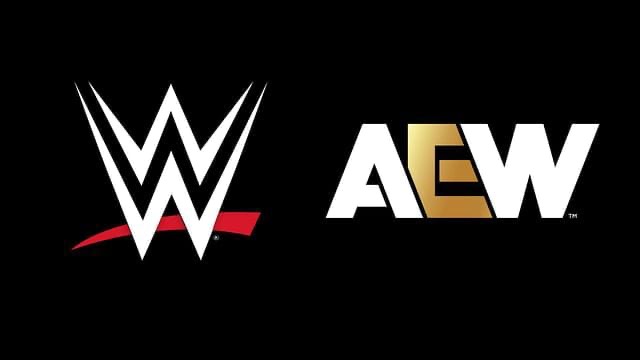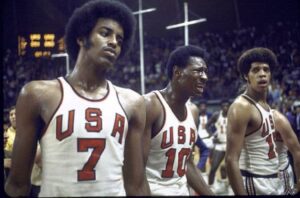Wrestling in America: WWE vs. AEW – Who’s Winning the Battle?


Introduction
Professional wrestling has been a staple of American entertainment for decades, with WWE (World Wrestling Entertainment) reigning supreme for much of its history. However, the emergence of AEW (All Elite Wrestling) in 2019 has introduced a new competitor, sparking a modern-day wrestling war. With passionate fan bases, high-profile signings, and innovative storytelling, both companies are vying for dominance. But who is truly winning the battle? Let’s analyze WWE vs. AEW in terms of ratings, revenue, talent, fan engagement, and future prospects.
The Legacy and Strength of WWE
WWE has been the undisputed leader in professional wrestling for decades. Founded in 1953 (as Capitol Wrestling Corporation), it grew into a global powerhouse under Vince McMahon’s leadership.
WWE’s Advantages
- Brand Recognition – WWE is synonymous with professional wrestling, with decades of global reach.
- Massive Roster – WWE has a deep talent pool, including stars like Roman Reigns, Seth Rollins, and Cody Rhodes.
- Mainstream Appeal – WWE partners with major platforms like Peacock and has deals with FOX and USA Network.
- Premium Live Events – Flagship events like WrestleMania, Royal Rumble, and SummerSlam generate millions in revenue.
- Global Expansion – WWE continues expanding into international markets, including Saudi Arabia and Europe.
Challenges WWE Faces
Creative Criticism – Fans often criticize WWE’s scripted promos and sometimes repetitive storylines.
Part-Timers Over Full-Timers – WWE occasionally prioritizes part-time stars over full-time talent.
Loss of Major Talent – AEW has signed former WWE stars like CM Punk, Bryan Danielson, and Jon Moxley.
AEW’s Rise and Growing Popularity
AEW, founded by Tony Khan in 2019, quickly became WWE’s biggest competitor since WCW in the 1990s.
AEW’s Strengths
- Creative Freedom – AEW gives wrestlers more control over promos and in-ring storytelling.
- Focus on Wrestling – AEW prioritizes in-ring action over entertainment-heavy segments.
- Star Power – The company has signed top-tier talent like Kenny Omega, MJF, and Chris Jericho.
- Younger Audience – AEW attracts a younger demographic that appreciates fast-paced wrestling.
- Dynamite and Collision Success – AEW Dynamite and AEW Collision provide fresh wrestling content weekly.
Challenges AEW Faces
Ratings Struggles – While AEW performs well, it hasn’t consistently challenged WWE’s viewership.
Injury Issues – AEW’s intense style leads to frequent injuries among top stars.
Roster Management – A growing roster makes it hard to balance TV time for all talent.
Ratings and Viewership: WWE vs. AEW
TV ratings are a key metric in the wrestling battle. WWE consistently dominates in viewership.
What This Means
WWE consistently attracts more viewers, proving its mainstream dominance.
AEW has a dedicated audience but struggles to break the 1-million mark.
WWE’s placement on FOX and USA Network gives it a competitive edge.
Revenue and Financial Power
Money plays a massive role in this wrestling war.
Why WWE Leads in Revenue
Multi-billion-dollar TV rights deals with FOX and USA Network.
International deals, including partnerships with Saudi Arabia.
Established streaming deals via Peacock (WWE Network).
While AEW is growing financially, WWE’s economic dominance is undeniable.
Talent and Storytelling
Both WWE and AEW have world-class talent, but they differ in storytelling approaches.
WWE’s Star Power
Roman Reigns – Dominant champion for years, headlining major events.
Cody Rhodes – A fan favorite with a compelling redemption story.
Seth Rollins – Arguably the best in-ring performer today.
AEW’s Key Stars
MJF – One of the best talkers in the business, current AEW World Champion.
Kenny Omega – A wrestling genius with match-of-the-year performances.
Jon Moxley – A former WWE star who thrives in AEW’s hardcore environment.
Storytelling Differences
WWE Focus – Entertainment-driven, long-term storylines (e.g., The Bloodline saga).
AEW Focus – Wrestling-based, high-paced storytelling with less scripted promos.
Both have strengths, but WWE’s storytelling connects better with casual fans.
Fan Engagement and Social Media
In the digital era, fan engagement is crucial.
Key Takeaways
WWE has a significantly larger social media presence.
AEW has an engaged hardcore fanbase but lacks WWE’s mainstream reach.
Future Predictions: Who Will Win the Battle?
Why WWE Might Stay on Top
Bigger financial resources and global reach.
Established TV deals with guaranteed revenue.
Ability to attract major sponsors and advertisers.
Why AEW Could Catch Up
Growing roster with passionate fan support.
Potential new TV deals in the future.
A younger audience that prefers its wrestling style.
Final Verdict: WWE vs. AEW
At this point, WWE remains the clear leader in the wrestling industry. It dominates in viewership, revenue, brand recognition, and global influence. AEW is a strong alternative and continues to grow, but it still has a long way to go before truly competing with WWE’s scale.
However, the true winners in this battle are the fans, who now have more wrestling content than ever before. Whether you prefer WWE’s grand entertainment or AEW’s high-paced wrestling, the modern wrestling landscape is better than ever.
Conclusion
The WWE vs. AEW battle is far from over. While WWE remains the dominant force, AEW is carving its own niche in the industry. As both companies evolve, the wrestling world will continue to thrive, offering fans the best of both worlds.
What do you think? Is WWE still the king, or is AEW closing the gap? Let us know in the comments!







